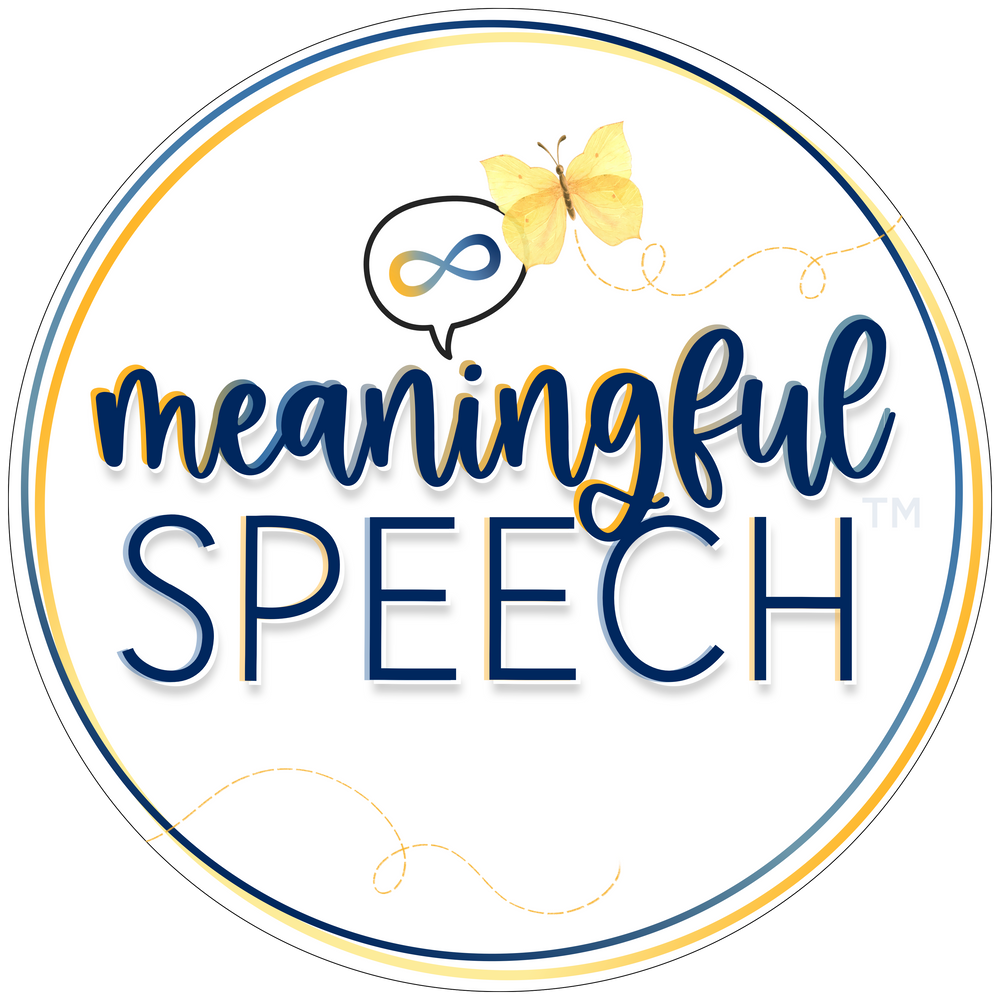AAC and Gestalt Language Processors: What You Need to Know
Oct 01, 2025
AAC and Gestalt Language Processors: What You Need to Know
As awareness of gestalt language development continues to grow, so does the need for thoughtful discussions around AAC (augmentative and alternative communication) programming. Most current AAC systems are built with analytic language processors in mind, which can leave parents and professionals wondering how to best support gestalt language processors (GLPs) using AAC or who may benefit from it.
Let’s explore how to effectively program AAC systems for GLPs, address common misconceptions, and highlight best practices for building truly supportive and individualized systems. If you're unsure if AAC is right for your child or client who is a gestalt language processor, check out this post here for guidance.
Common Misconceptions About AAC & Gestalt Language Processing
Misconception #1: Phrase-Based Systems Are the Only Option
While systems like PODD or TD Snap can be great tools for GLPs, they aren’t the only viable options. Most AAC systems can be adapted to meet the needs of GLPs—it’s all about how they’re programmed and implemented.
Misconception #2: Core Vocabulary Should Be Removed
Some believe that core vocabulary isn’t needed for GLPs, especially in early stages.In reality, users will eventually need these foundational single words as they progress in their language development (Stages 3+).
Misconception #3: Sequencing One Word at a Time Is the Goal
For early-stage GLPs (Stages 1–2), language isn’t yet flexible. They haven’t identified single words as individual units of meaning, so building sentences word-by-word isn’t appropriate. Instead, we want to program potential gestalts keeping in mind how these will grow with the child through the stages (e.g. how they will mitigate them).
Misconception #4: Old Gestalts Should Be Deleted
As a child progresses to Stage 3 or 4, you might be tempted to delete earlier gestalts from their device—but don’t! Even when they’re using original, flexible language, GLPs may still rely on gestalts for a number of reasons such as when they're dysregulated, sick, or tired. Removing them can limit access to comfort and communication.
What We Do Want to Do: Best Practices for Programming AAC for GLPs
To support GLPs effectively, AAC systems should be programmed with their natural developmental trajectory in mind. Here’s how:
Organize for Growth
Design systems that evolve as the child moves through NLA stages—starting with gestalts and leading toward flexible, original language. Think long-term: Will the structure of this system still support the child at Stage 4 or beyond?
Incorporate Current Gestalts and Mitigations
Add the gestalts the child is currently using (Stage 1), and include mitigations they’ve started developing (Stage 2). If the app allows, use pop-ups or hold features for mitigated phrases.
Personalize Gestalts
There is no one-size-fits-all list of gestalts. Use meaningful language specific to the child: scripts from favorite shows, routines they reference, or phrases they’ve created. The more personal the gestalt, the more communicative power it holds.
Features to Look for in AAC Systems for GLPs
When choosing or customizing an AAC system for a gestalt language processor, look for features that support how they process and produce language:
-
Video Linking and Recorded Speech: Many GLPs struggle with synthesized voices. The ability to upload real voices and connect to video clips makes AAC more engaging and accessible.
-
Custom Scene Pages and Photos: Personalized visual scenes can reflect routines or meaningful contexts in the child’s life.
-
Color-Coded Language Organization: For GLPs reaching Stage 4+, color coding (e.g., by part of speech) can support the transition into more flexible sentence-building.
Supporting AAC for gestalt language processors requires an understanding of their unique language development journey. Programming AAC with intention ensures we’re not just meeting them where they are, but helping them move forward as well. By addressing common misconceptions and embracing best practices, we can create systems that honor the child's language development and guide them toward flexible, self-generated language.
Want to Learn More?
- There are many free podcasts, webinars and articles to get you started. A comprehensive list of resources can also be found on our website. We now have a FREE masterclass on echolalia and child-led therapy and a Beginner's Guide to AAC & Gestalt Language Processing that are perfect for anyone starting their learning journey or on the fence about purchasing our courses!
- Meaningful Speech Course or AAC + Gestalt Language Processing Course: Deepen your understanding of gestalt language processing and learn strategies to support gestalt language development with one of our self-paced courses or webinars.
- SLP Registry: Find speech-language pathologists experienced in supporting gestalt language processors and child-led therapy.
- Free Webinars and Articles: Access free information to further your own knowledge or get free resources you can share with others.
